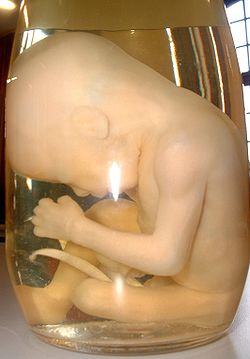How do you repair a damaged garden?
by Tamara Traubman

The human genome (or all of the human DNA), the first draft of which is perfect these days, is a huge chain of three billion building blocks, called "DNA bases". There are four types of bases, and they are marked with the letters A, T, G and C. Different combinations of these bases create genetic compositions, which control human development from the moment of conception until death.
Every living being has a genetic chain unique to it. For example, the base sequence AACCGGCAG is the beginning of the DNA sequence responsible for the activity of the human brain. The sequence is one of the few parts of DNA that humans do not share with chimpanzees, who are 98% similar to us.
"The first goal is to finish reading the human genome, so that we have the so-called book of life," says Prof. Doron Lantz, head of the Genome Center at the Weizmann Institute of Science. "But the DNA sequence itself is meaningless information without further analysis." He adds that the decoding of the genome will speed up the rate of identification of genes (DNA sections that are responsible for a certain trait), their role and the mutual relations between them.
Already today, geneticists know of several mutations (errors in the DNA sequence) that can cause diseases. The American company Epimatrix collected all the known mutations that cause cancer and transferred them to a "DNA chip". A device that reads the information on the chip can identify in seconds all the mutations in a DNA sample. According to Lantz, it is a matter of time until such chips will be found in every maternity ward, and will provide a complete picture of the diseases that the newborn - or even the fetus - will develop later in life.
Most of the genetic defects identified to date are responsible for diseases caused by a single gene defect. However, most diseases are caused by defects in several genes. Decoding the genome will make it possible to understand these diseases as well.
"It's a little scary, that one day you'll bring your blood, and you'll immediately know all the mutations you have," says Dr. Mira Korner, a molecular biologist in charge of the Genome Decoding Laboratory at the Hebrew University. Such a test may reveal that an unborn fetus is likely to die in its youth, and present the parents with a difficult dilemma.
A great deal of effort is devoted today to identifying DNA bases called branches. These are small genetic differences between people, the result of a change in one DNA base - for example, when in a certain place in the sequence the DNA base A appears instead of G. Most of the branches are found in sections of DNA that have no function, but other sections are responsible, For example, on drug sensitivity.
The major pharmaceutical companies established a consortium to identify the branches. Today there are more than 147 thousand branches in the database. There are hundreds of thousands of branches that have not been identified.
"The big story is where we differ," says Lantz. "When we find all the branches, or a large part of them, it will be possible to get a map of human diversity. That is, to know how each person is different from the other, and to receive information about drug sensitivities, disease tendencies and even behavioral traits.
{Appeared in Haaretz newspaper, 25/6/2000}
